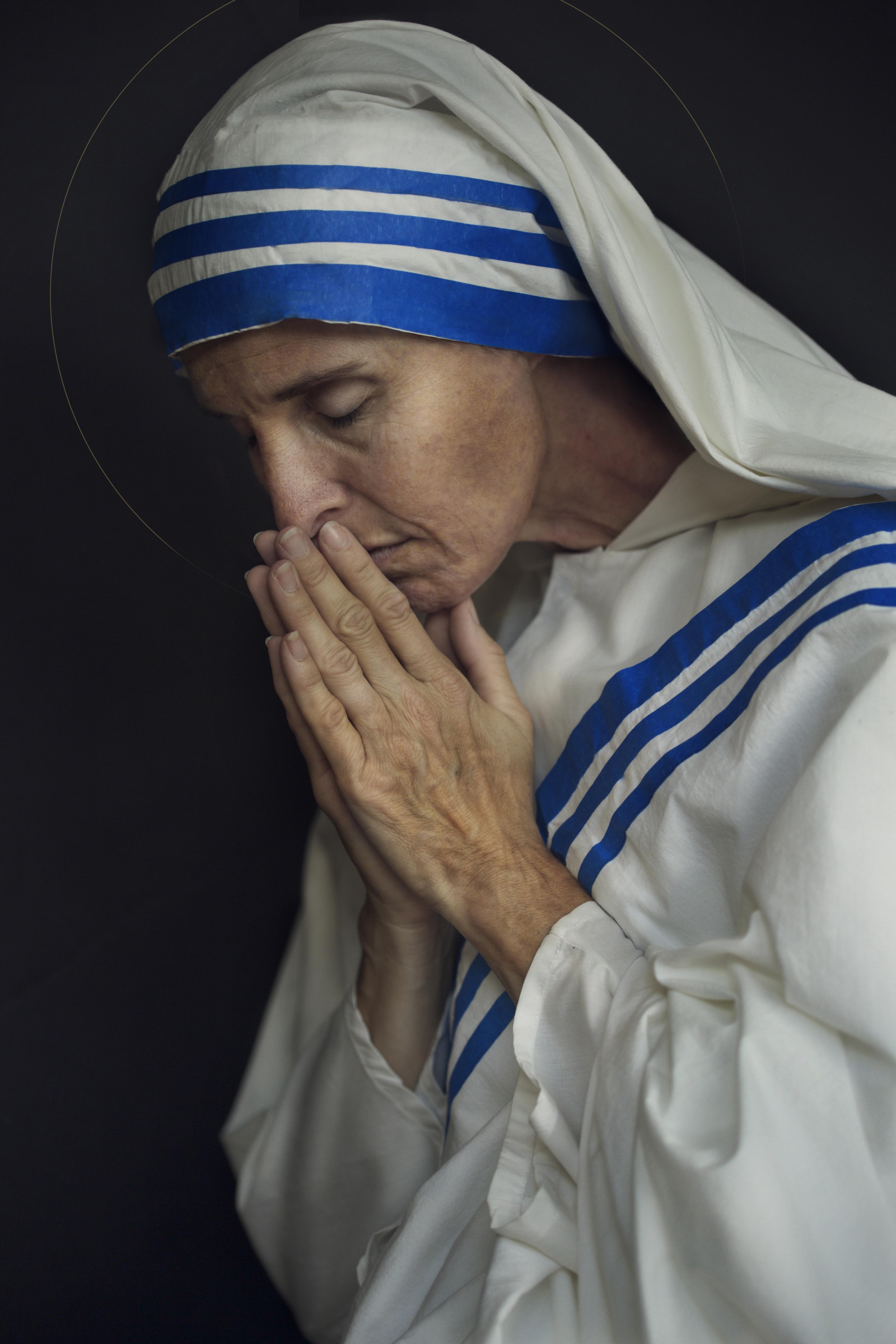Have you ever stopped to think about the people whose lives leave a real mark on the world, shaping how we see compassion or even what we expect from entertainment? It's really quite something, you know, how certain individuals, perhaps named Teresa, have touched so many different parts of our shared human experience. We often hear about those who give their whole selves to helping others, or maybe those who achieve great things in creative fields, and each of their paths offers something unique to consider.
Sometimes, the stories of these people come to us in bits and pieces, like looking at different parts of a very large picture. We see glimpses of their beginnings, the choices they made, and the ways their actions brought about change for countless individuals. It's about understanding the heart behind their deeds, the personal strength that moved them forward, and the lasting impact they created. This kind of exploration can be, in some respects, truly inspiring.
This look at a "Teresa Ferrer biography," as we are calling it, will actually bring together details from several remarkable figures named Teresa, drawing directly from the information we have at hand. It's a way to appreciate the diverse ways one name can be associated with such different, yet equally significant, life stories. You might find it interesting to see how various paths, all connected by a shared first name, can show us so much about what it means to live a life of purpose or public presence.
Table of Contents
- Exploring Lives of Impactful Teresas
- The Spiritual Calling of Teresa
- Teresa's Work for the Disadvantaged
- Recognizing Teresa's Contributions
- Teresa's Influence Beyond Borders
Exploring Lives of Impactful Teresas
When we talk about a "Teresa Ferrer biography," we are actually looking at a collection of stories, each one belonging to a different person named Teresa who made a mark in her own way. It's like gathering pieces of a puzzle from different boxes, yet seeing how each piece, belonging to a "Teresa," contributes to a broader picture of human accomplishment and dedication. These are individuals whose life stories, as presented in our available information, show us a wide range of human experiences, from deep spiritual commitment to public performance and academic drive. You might find it pretty interesting, actually, how varied these paths are.
Who Were These Remarkable Individuals?
The collection of figures we are considering under the umbrella of "Teresa Ferrer biography" includes some truly well-known names. There is, for instance, Mother Teresa, a figure recognized globally for her work with those in great need. She was a Roman Catholic saint, and a recipient of a very prestigious award for peace, given for her tireless efforts to help the poor in India. Her life was, in many ways, a testament to serving others, focusing on providing comfort and care for people who were sick and had very little. She was, you know, a nun and a missionary, giving her entire existence to this important work. Then, there is also Teresa of Avila, a Carmelite nun from Spain, who was a significant figure in religious thought and practice. She was, in fact, recognized as the very first woman doctor of the Church by Pope Paul VI, a real honor that had only been given to thirty saints before her time. And then, quite differently, we have Teresa Palmer, an actress and a model, who has built up a rather impressive collection of movie appearances. Her work is, of course, on a different stage, but it shows another kind of public presence. Lastly, there's a young woman named Teresa, described as having great ambition, who came from a neighborhood with little wealth. She was able to study at a well-regarded preparatory school because of her excellent school marks, getting there with the help of a scholarship. This shows a different kind of strength, a drive for learning and betterment, which is pretty admirable, I mean.
What Shaped Their Early Paths?
The early beginnings of these Teresas, as far as our information tells us, were quite varied, too. Mother Teresa, for example, was born Anjezë Gonxhe Bojaxhiu in a place that is now known as Macedonia. Her birth name itself suggests a different start from the name she became known by around the world. Her family background and early experiences, one can gather, played some part in shaping the person she would become, though the details of those very early days are not fully laid out here. Teresa of Avila, on the other hand, began her life in a town in Spain called Ávila. Her upbringing within that particular culture and time, you know, would have set the stage for her later spiritual path. For Teresa Palmer, her early life took place in Adelaide, South Australia. Her father, Kevin Palmer, was an investor, which gives a little peek into her family circumstances. These early settings, basically, provided the groundwork for their future endeavors, whether in faith, service, or the arts. And that ambitious young Teresa, the one from the less wealthy area, her drive for education from a challenging start really highlights how early circumstances can shape a person's determination, honestly.
The Spiritual Calling of Teresa
For some of the Teresas we are exploring, a deep spiritual call was a central part of their life story. This kind of calling often means giving up much of what society values in favor of a different kind of richness, one found in faith and service. It's a path that requires a great deal of personal commitment and a willingness to follow a purpose that feels much larger than oneself. You see, this kind of dedication is really quite powerful, and it shapes every decision someone makes.
How Did Faith Guide Their Actions?
Mother Teresa's life, for instance, was very much guided by her spiritual convictions. She was a Catholic nun, and her faith was the engine behind her decision to found the Missionaries of Charity. This group was, in essence, a Roman Catholic gathering of women who dedicated themselves to helping those who had nothing. Her actions were a direct response to what she felt was a call from a higher power, a plea to "come be my light." This personal invitation, so it seems, moved her to become a "mother to the" people she served, a missionary of charity in every sense. She even received a second, distinct call from God while in India, a call to live among the poor and help them directly. Her faith was not just a belief system; it was a way of life, a practical guide for every step she took. She might have been small in physical size, but her belief was like a rock, firm and unwavering. This kind of deep conviction, you know, really shaped her entire existence. Similarly, Teresa of Avila was a prominent Carmelite nun, and her life was also deeply immersed in spiritual thought and practice. Her role as a reformer and a contemplative shows how her faith led her to reshape religious orders and to engage in profound spiritual reflection. Her path, in a way, was about bringing spiritual depth and structure to others, which is quite a feat.
Teresa's Work for the Disadvantaged
A significant thread running through the stories of some of these Teresas, especially Mother Teresa, is a profound commitment to helping those who are struggling. This isn't just about offering a little bit of help here and there; it's about making a lifelong promise to stand with the poor, the sick, and the dying. It involves a willingness to be present in difficult situations and to offer comfort and care where it is most needed. This kind of work, you know, truly speaks to the heart of what it means to be human.
The Missionaries of Charity and Their Purpose
Mother Teresa's most widely recognized contribution was the establishment of the Missionaries of Charity. This was not just a casual group; it was a formal Roman Catholic congregation made up of women who had a shared goal: to dedicate their lives to assisting the poor. Their main area of focus was India, particularly in Calcutta, where they worked tirelessly to provide comfort and care to people who were sick, had no home, or were facing the end of their lives. The purpose of this order was quite clear: to serve the sick and the impoverished, both in India and, eventually, around the globe. Mother Teresa's vision for this group was rooted in her personal call to live among and serve those in the greatest need. She saw her work as a direct response to a spiritual request, which made her a true missionary of charity, a comforting presence for those without hope. The organization, you know, became a symbol of selfless service, reaching out to people who were often overlooked by society. It was, basically, a practical expression of her deep compassion, bringing tangible help to those who needed it most.
Recognizing Teresa's Contributions
When people dedicate their lives to significant causes, whether through spiritual leadership, humanitarian efforts, or public performance, their contributions often gain recognition. This can come in many forms, from formal titles and prestigious awards to the simple, lasting appreciation of the people whose lives they touched. It's a way for society to acknowledge the impact someone has made, you know, and to remember their efforts.
What Honors Were Bestowed Upon Them?
Mother Teresa, for instance, received the Nobel Peace Prize, a very high honor indeed, given for her missionary work with the poor in India. This award is a global recognition of efforts to promote peace and goodwill, and her work certainly fit that description. She was also, of course, recognized within the Catholic Church as a saint, known as Saint Teresa of Calcutta, which is a profound spiritual honor. This acknowledges her holy life and her dedication to God's work. Teresa of Avila received a unique and very significant honor when Pope Paul VI declared her the first woman Doctor of the Church in 1970. This title is given to saints whose writings and preaching are considered particularly important for the Church. At that time, it was an honor that had been given to only thirty other saints in the Roman Catholic tradition, which makes her recognition quite special. For Teresa Palmer, while her honors are of a different kind, her "impressive film credits" speak to the recognition she has received in her chosen field of acting and modeling. These credits are, in a way, her awards, showing her success and the appreciation for her work in the entertainment world. Each of these Teresas, you know, earned respect and acknowledgment in their own distinct areas, which is really quite something.
Teresa's Influence Beyond Borders
The influence of individuals like these Teresas often stretches far beyond their immediate surroundings, reaching across different countries and cultures. Their stories, their work, and their personal qualities can inspire people in places they never even visited. This kind of impact shows how a single life, or a collection of lives under a shared name, can create ripples that spread widely, touching many hearts and minds. It's pretty amazing, actually, how far a person's actions can reach.
The Enduring Legacy of Teresa Ferrer Biography
The lasting impact of the Teresas we've considered, as part of this "Teresa Ferrer biography," is truly remarkable. Mother Teresa's work, for example, extended far beyond India, with the Missionaries of Charity establishing a presence in many places around the world, continuing her mission of serving the sick and poor. Her life left behind what is described as a legacy of unwavering faith, hope that could not be defeated, and an extraordinary capacity for kindness. Her response to a spiritual call made her a guiding light for countless people, and her influence, you know, still moves many today. Teresa of Avila's writings and spiritual insights continue to guide people seeking a deeper connection to their faith, centuries after her time. Her reforms within the Carmelite order also had a lasting effect on religious life. Teresa Palmer, through her acting, brings stories and characters to life for audiences across the globe, contributing to the cultural landscape and entertaining millions. And the ambitious young Teresa, whose story is briefly mentioned, represents the enduring power of education and personal drive to overcome difficulties, a message that can inspire anyone facing challenges. These different Teresas, in their own ways, have left marks that continue to be felt, showing us that dedication, whether spiritual, artistic, or personal, can really make a difference.
Related Resources:



Detail Author:
- Name : Loy Boehm
- Username : lori.mclaughlin
- Email : guy.pollich@gmail.com
- Birthdate : 1994-10-03
- Address : 3031 Karli Knoll Edwardomouth, AR 21223
- Phone : (323) 701-5098
- Company : Weber-Kovacek
- Job : Septic Tank Servicer
- Bio : Quisquam assumenda a voluptatem. Velit veniam commodi nemo. Id voluptas reprehenderit dolorem numquam qui. Nam aut commodi rerum iste doloremque.
Socials
facebook:
- url : https://facebook.com/rosenbaum1985
- username : rosenbaum1985
- bio : Sapiente inventore natus cumque impedit eum quia.
- followers : 4280
- following : 1640
instagram:
- url : https://instagram.com/crystel2178
- username : crystel2178
- bio : Et occaecati laborum alias odio. Sunt autem soluta id sit. Quia laborum rerum cumque.
- followers : 4143
- following : 670